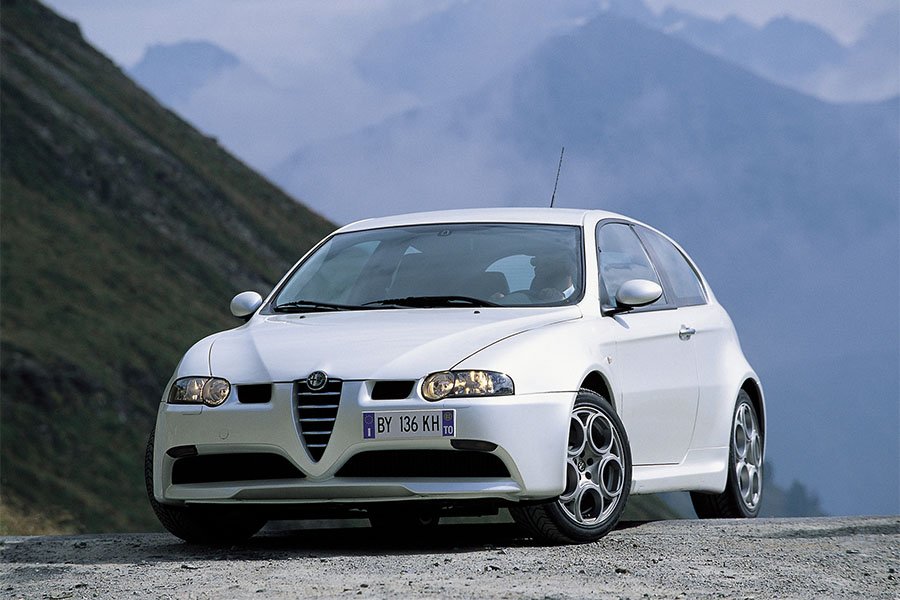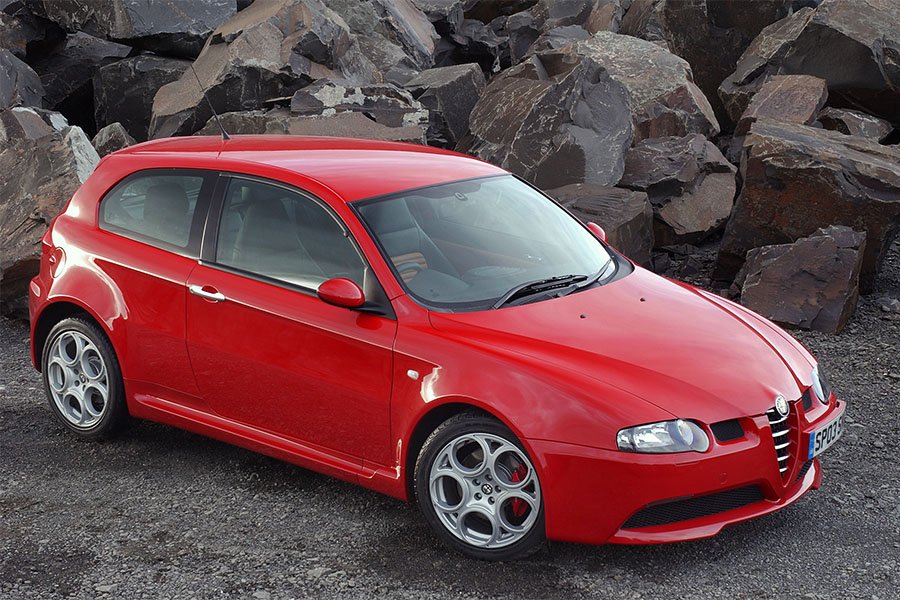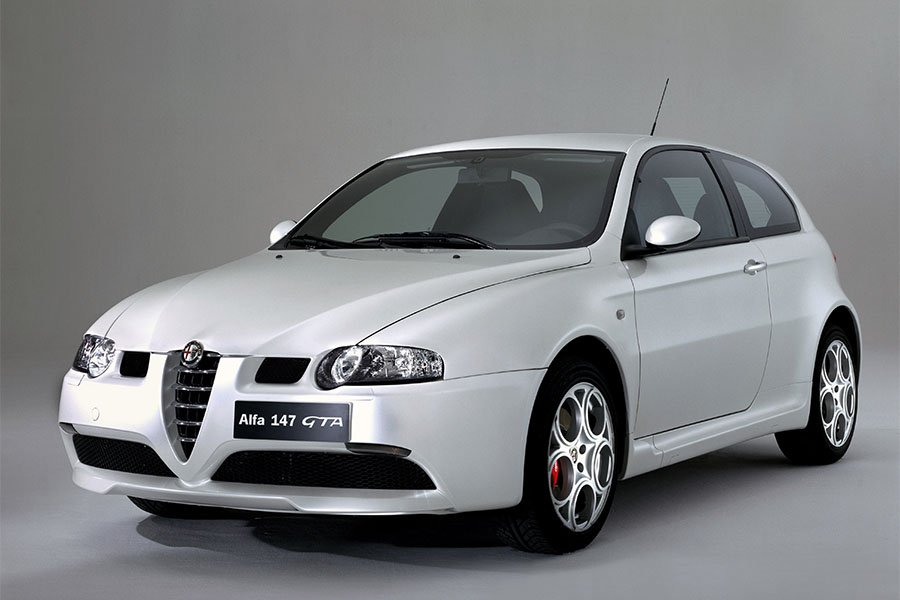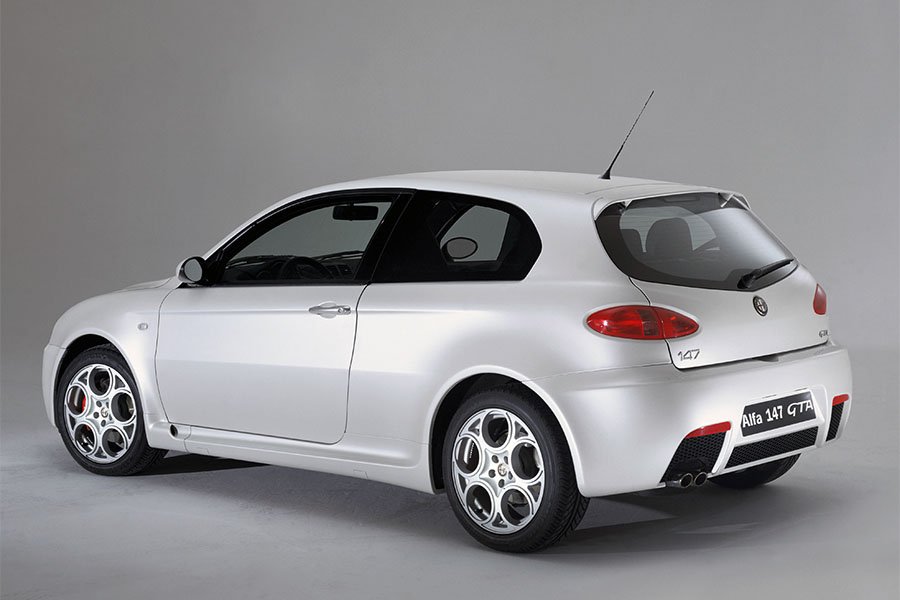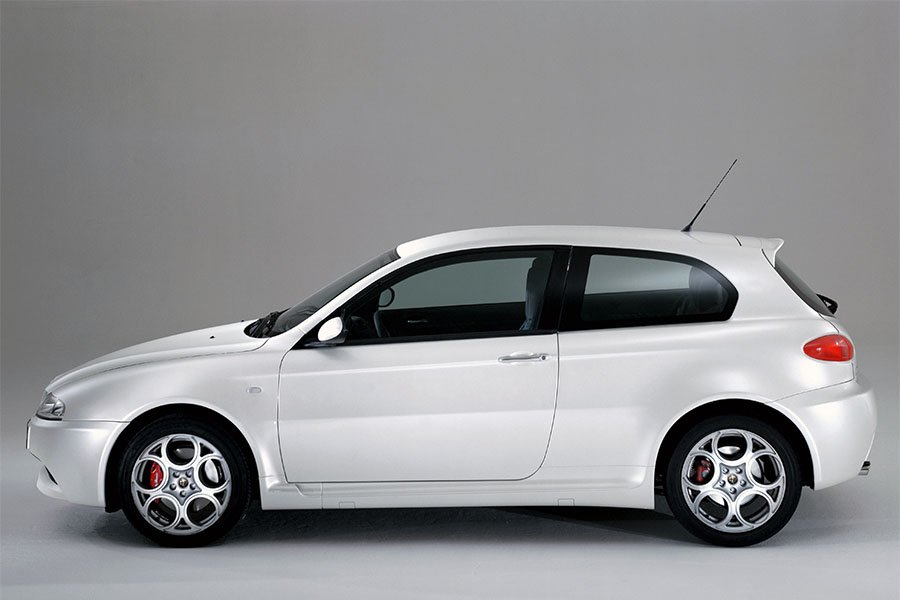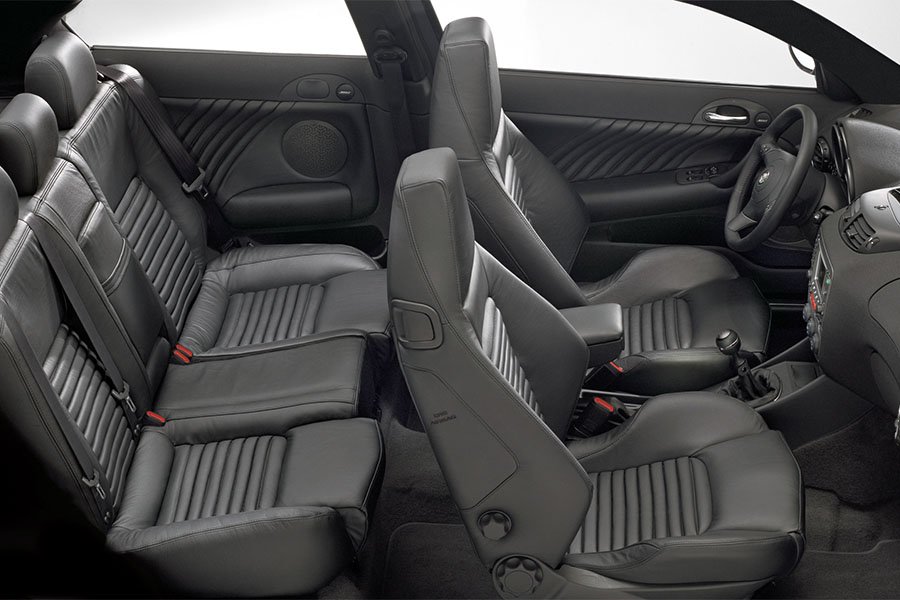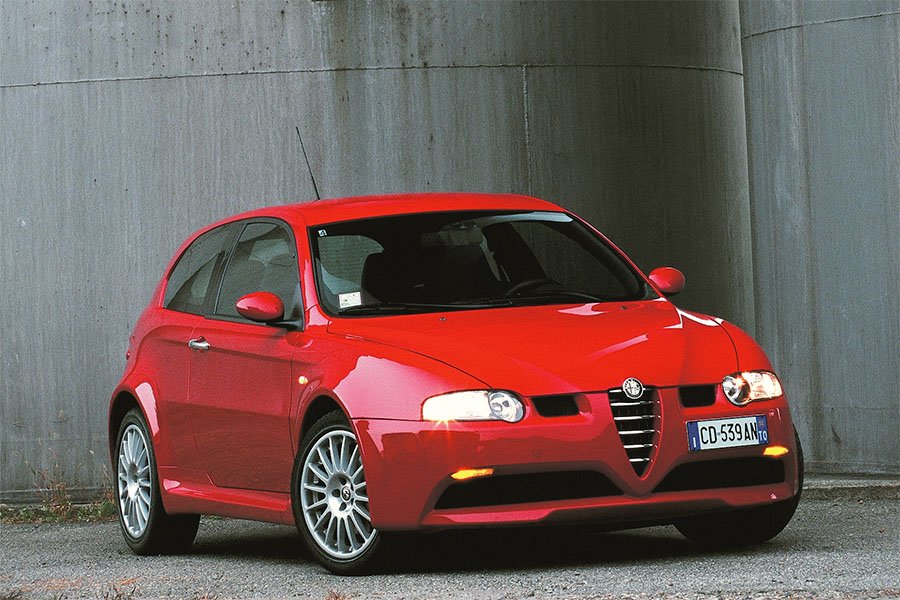Guide: Alfa Romeo 147 GTA - a Historical & Technical Appraisal
/BACKGROUND
At the Frankfurt Motor Show in September 2001, Alfa Romeo revived the iconic GTA moniker first seen in the mid 1960s when the Giulia-based Gran Turismo Allegerita began its illustrious racing career.
Compared to the standard Giulia Sprint GT, the GTA had most notably featured a lightweight aluminium instead of steel body. It also came with an array of additional performance modifications in order to homologate the most extreme specification possible for touring car racing.
Between 1966 and 1968 the GTA went on to secure a hat-trick of European Touring Car Championship titles. The subsequent GTAm won again in 1970 and 1971.
22 years later, Abarth (the Fiat Group’s in-house competition department) created a one-off 155 GTA to homologate a racing version for the mid 1990s Super Touring formula. These cars went on to win the British, Italian and Spanish Touring Car Championships, but a road-going version unfortunately never got beyond the prototype stage.
Alfa Romeo customers were finally able to buy another GTA-badged model when a factory hod rod based on the critically acclaimed mid-range 156 broke cover at Frankfurt in 2001. The 156 GTA could be ordered in both Saloon and Estate body formats with either a six-speed manual or F1-style semi-automatic Selespeed gearbox.
Alfa Romeo had launched the original 156 back in September 1997 at which point it joined the entry level 145 / 146 range, the flagship 166 Saloon and sporty two-seat GTV / Spider line.
The 145 / 146 line was subsequently replaced by the 147 at the Turin Motor Show in June 2000. Deliveries began that October and, just like the 156 had done in 1998, the 147 was crowned European Car of the Year for 2001.
The 147 (internal model code 937) was based on 156 running gear and initially came as a three or five-door Hatchback with a choice of 1.6 and 2-litre petrol or 1.9-litre diesel engines. As per the 156, customers could choose a manual or semi-automatic Selespeed gearbox.
Given that the 147 and 156 shared so many parts in common, it came as no surprise when Alfa Romeo unveiled a GTA version of their entry level model at the Paris Motor Show in October 2002.
The 147 GTA incorporated nearly all the enhanced equipment from its bigger brother plus a few special features of its own as it took the fight to the likes of Volkswagen’s Golf R32 and the Ford Focus RS.
CHASSIS
The 147 was based on a galvanised steel bodyshell. It used a short wheelbase version of the 156 floorpan which had undergone a 100mm reduction behind the front seat area.
Uniquely, the 147 GTA came with a special aluminium alloy rear subframe instead of the heavier steel item used by lesser 147 variants.
Like every 147 and 156, this latest model used a double wishbone suspension layout up front with a MacPherson strut, coaxial spring, twin transverse link and a longitudinal strut configuration out back.
As per the 156 GTA, many weight-saving aluminium components were incorporated and the rear suspension attachment points were altered to improve handling. Similarly, ride height was lowered, the springs and dampers were stiffened and thicker anti-roll bars were installed. However, the 147 GTA’s spring, damper and bush settings were slightly softer than the 156 variant.
Once again, the struts and steering links were uprated compared to the rest of the 156 / 147 range and the front lower wishbone beams were reinforced.
A quicker, more responsive power-assisted steering rack was unique to these GTA-badged models and used a 1.7 ratio compared to the normal 2.1.
Unlike the 156 GTA, the 147-based version came with a new permanently engaged Vehicle Dynamic Control system (VDC) that was in constant communication with the brake sensors, the engine control unit and steering to help correct understeer and oversteer in extreme conditions.
The high performance disc and four-piston caliper Brembo brake system was lifted straight from the 156 GTA. Ventilated front discs had a 305mm diameter while the solid rears measured 276mm.
ABS and Electronic Brakeforce Distribution were fitted as standard.
Five ring 17 x 7.5-inch alloy wheels were again sourced from the 156 GTA and originally came shod with Pirelli tyres.
Both cars shared an identical 63-litre fuel tank with the rest of the 156 / 147 range (mounted over the rear axle).
ENGINE / TRANSMISSION
In the engine bay was the same power unit as the 156 GTA. It was a transversely-mounted normally aspirated all-alloy 60° V6 with dual overhead camshafts, four valves per cylinder and wet-sump lubrication.
Assembly took place by hand at the Maserati Research Centre in Modena from where these power units were trucked down to the Fiat Group factory in Pomigliano d’Arco, Naples, for installation.
Displacement was 3179cc thanks to a bore and stroke of 93mm and 78mm making these the largest iterations of Giuseppe Busso’s fabled V6 yet.
A 10.5:1 compression ratio was employed along with the latest Bosch Motronic ME7.3.1 engine management and drive-by-wire throttle.
Peak output was 247bhp at 6200rpm and 221lb-ft at 4800rpm.
Alfa Romeo offered a choice of two reinforced six-speed transmissions: a traditional manual (standard) or a semi-automatic Selespeed paddle-shit gearbox (optional).
ASR traction control was standard, but a limited-slip differential was extra.
BODYWORK
The 147’s bodywork was penned by 156 designer Walter de Silva and Wolfgang Egger at Alfa Romeo Centro Stile.
As expected, the GTA looked more aggressive than the rest of the 147 range and came with myriad cooling upgrades along with some unique equipment to improve high speed stability.
A new front bumper assembly featured additional air ducts inboard of the headlights, canard-style chin spoilers and larger base intakes with the fog lights now mounted up above (instead of in each outer corner) to maximise airflow.
Black instead of silver headlight internals gave a sportier appearance.
Down each flank were subtly flared fenders, deep body coloured-and-vented side skirts, a re-contoured fuel filler cap and clear instead of amber indicators.
At the back of the car Alfa Romeo added a roof-mounted spoiler and new extended rear bumper assembly with a trio of meshed cooling vents and a cutaway to house the twin pipe exhaust.
Overall the GTA was 43mm longer, 35mm wider and 30mm lower than a regular 147.
Aside from the plastic composite bumpers and skirts, the rest of the GTA’s panels were fashioned from steel.
INTERIOR
Inside, the 147 GTA came with an array of special equipment to include high backed sports seats with integrated headrests and bigger side bolsters, a new three-spoke steering wheel, drilled aluminium pedal and footrest covers with dimpled rubber inserts, metal GTA-branded sill plates and recalibrated gauges.
Horizontally ribbed seat centres and door panels were another special GTA feature; the fabric upholstery fitted as standard could be specified on one of three colours: black and blue, black and grey or black and red.
Located directly behind the steering wheel as a triple cowled instrument binnacle with a combined fuel and oil temperature gauge flanked by read outs for road and engine speed. The speedometer and combination gauge also housed digital read outs for all manner of other statistics.
Controls for the audio and ventilation systems were housed on a central control panel.
The list of standard equipment included front and side airbags, dual zone air-conditioning, cruise control, electric windows, electric mirrors and an eight speaker audio system with CD player.
OPTIONS
The 147 GTA’s optional Puma leather upholstery was a darker shade than other 147 variants.
Customers could also specify two-tone upholstery with the seat and door panel centres finished in one of four contrasting shades: Nero Montecarlo, Cuoio Imola, Blu Le Mans or Grigio Silverstone.
Other optional extras included multi-spoke alloy wheels, a Q2 limited-slip differential, an electric sunroof, Xenon headlights, headlight wash / wipe, the semi-automatic Selespeed transmission and a multimedia system with satellite navigation and Bluetooth.
WEIGHT / PERFORMANCE
At 1360kg the 147 GTA weighed 50kg less than the 156 GTA Saloon and 100kg less than a 156 GTA Sportwagen.
The new car’s 0-62mph time was two tenths quicker (6.1 seconds).
Both variants were electronically limited to 155mph.
PRODUCTION CHANGES
The only production change came in November 2003 when, like the 156 GTA, the front discs were enlarged from 305mm to 330mm. New radially-mounted calipers were fitted at the same time.
END OF PRODUCTION
147 GTA production ceased in October 2005.
In total 5029 cars were built of which 1004 were equipped with the semi-automatic Selespeed gearbox.
Text copyright: Supercar Nostalgia
Photo copyright: Alfa Romeo - https://www.alfaromeo.com
